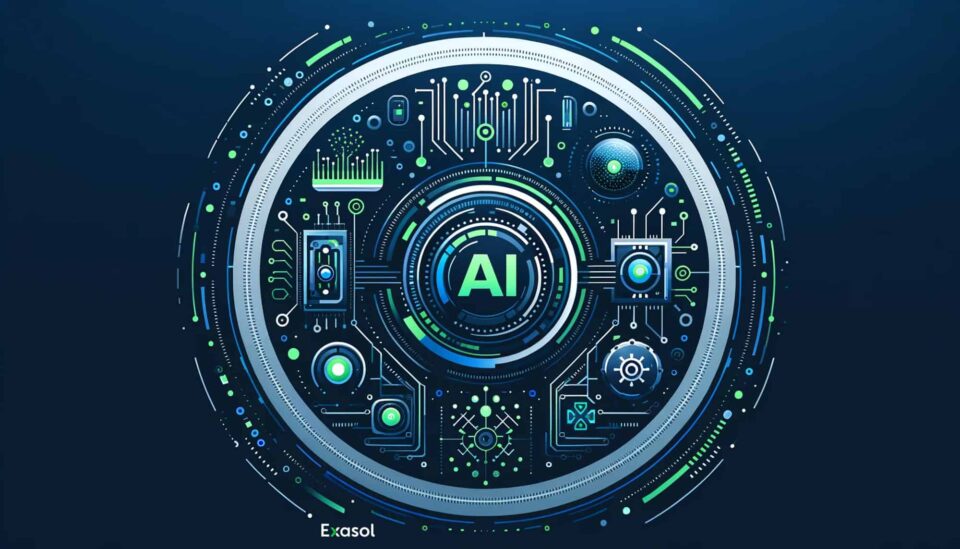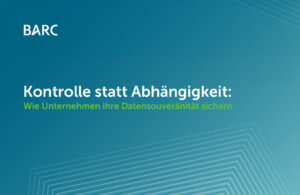
Navigating AI Ethics: Top 5 AI Bias Examples in Data Analytics (and How to Tackle Them)
In an era that’s been driven by the rapid evolution of technology, artificial intelligence (AI) has become an integral, nearly seamless part of our daily lives. As AI systems play a pivotal role in decision-making processes, worries about AI bias, ethics, and fairness have taken centre stage. The “black box” problem, in which AI algorithms operate without revealing their inner workings, has raised concerns about unintended biases in automated decision-making. This in turn has sparked a surge in efforts to safeguard and improve AI ethics, with a specific focus on addressing bias within the world of data analytics.
What is AI bias?
The concept of AI bias suggests that machine learning algorithms can exhibit bias when performing their designated tasks, such as data analysis or content creation. This bias typically reinforces detrimental beliefs that stem from human biases and that perpetuate stereotypes related to racial bias and gender bias.
AI Ethics: The Driving Force
As AI applications continue to evolve, the ethical implications surrounding their use have become much more prominent. Organizations are becoming increasingly aware of the need to create AI algorithms with sound ethical principles to ensure fairness and prevent unintended consequences. But it’s a tricky job because the field of AI ethics demands a delicate balance between innovation and the responsible use of technology, putting pressure on how exactly to minimize bias in automated decision-making processes.
Bias in Data Analytics
At the core of any AI system lies data analytics, and the quality of the insights they generate depends on the data used to train them. Examples of AI bias in data can stem from historical prejudices, societal stereotypes, or systemic inequalities. For example, if historical data used to train an AI model reflects gender or racial biases, the model is likely to perpetuate and amplify those biases in its predictions or decisions. Recognizing and addressing bias in data analytics is, therefore, crucial for building fair machine learning models that uphold sound AI ethics and ensuring that AI tools come built in with bias detection capabilities.
Top 5 AI Bias Examples in Data Analytics
- Diverse and representative Data
- Algorithmic Transparency
- Continuous Monitoring and Auditing
- Diverse Development Teams
- Ethical Guidelines and Standards
1. Diverse and Representative Data
To mitigate biases in AI and data analytics, it’s vital to ensure that the training data is as diverse and as representative of the real-world population as possible. Incorporating a wide range of perspectives into input data allows AI models to better understand and reflect a broader, more nuanced spectrum of human experiences, reducing the chance of machine learning bias and instead fostering an environment that better aligns with sound AI ethics.
2. Algorithmic Transparency
To quote Andrew McAfee of MIT, “If you want the bias out, get the algorithms in.” Transparency in algorithmic decision-making is critical for building trust, so organizations are increasingly trying to adopt techniques to make their AI models more interpretable. This includes using “explainable AI” (XAI) methods that give insights into how decisions are reached, helping users understand the factors that influence outcomes. Promoting algorithmic transparency is therefore a cornerstone in the journey towards robust AI ethics and reducing algorithmic bias.
3. Continuous Monitoring and Auditing
Establishing a continuous monitoring and auditing process is essential to identify and correct any bias in AI that may show up over time. By regularly checking the performance of AI models and making any necessary adjustments, organizations can ensure that biases are dealt with promptly. This helps improve the ongoing development of fairer systems and reinforces the commitment to AI ethics.
4. Diverse Development Teams
Building diverse teams made up of developers, data scientists, and engineers is crucial for minimizing biases. A diverse group of human decision makers brings a wider range of different perspectives and experiences to the development process, reducing the chance of introducing unconscious biases that might influence the design and implementation of AI systems. Diverse development teams are therefore an integral part of fostering a culture of AI ethics.
5. Ethical Guidelines and Standards
The development of clear guidelines and standards for AI ethics is a very important part of shaping responsible practices. Organizations should stick to them religiously to ensure that the AI applications they create are always aligned with ethical principles and that they don’t compromise on fairness, privacy, or human rights. The establishment and adherence to ethical guidelines are non-negotiable in the pursuit of robust AI ethics. For example, Emma Ruttkamp-Bloem, who led a UNESCO expert group on AI ethics and now sits on the UN’s High-Level Advisory Body on Artificial Intelligence, emphasizes the need for global governance in AI, stating:
“The only sustainable AI is lawful AI, trustworthy AI, responsible AI. It has nothing to do with stopping innovation.”
Her quote underscores the balance between ethical AI development and continued innovation.
How to Mitigate AI bias
As artificial intelligence systems continue to advance, the ethical consequences of their deployment become increasingly crucial. In the wide world of data analytics, addressing bias is a critical step towards constructing fair and responsible AI systems. By promoting transparency, diversity, and adherence to ethical guidelines, organizations can navigate the complex landscape of AI ethics with confidence, thereby fostering public trust.
Looking ahead, it will become essential for technologists, ethicists, policymakers, and the wider community to collaborate closely as they shape a future where AI enhances our lives without compromising on fairness and equality. This collaborative effort will be key transforming the pursuit of ethical AI from a mere responsibility into a shared commitment to building a better future.
So as we all navigate the evolving landscape of AI ethics together, addressing bias in data analytics becomes a critical step in ensuring we deploy artificial intelligence fairly, responsibly and equitably. The emphasis on transparency, diversity, and adherence to ethical guidelines is not merely a checkbox, but a collective responsibility that must be built into the DNA of AI development. In this way, we pave the way for a future where AI not only enriches our lives but does so with unwavering adherence to the principles of fairness and equality. Finally, if you’d like to learn a little more about the impact of AI and what the future of Artificial Intelligence could hold for your business in the year ahead, take five minutes to read “Exasol’s 2024 Predictions: 5 AI-Fueled Trends for Data-Driven Organizations to Watch.”
References:
ISACA Journal: “Bias and Ethical Concerns in Machine Learning.” Niral Sutaria, CISA, ACA, 29 August 2022. https://www.isaca.org/resources/isaca-journal/issues/2022/volume-4/bias-and-ethical-concerns-in-machine-learning
“Machines and Trust: How to Mitigate AI Bias”, Toptal.com: https://www.toptal.com/artificial-intelligence/mitigating-ai-bias
Brooking Institute: “Algorithmic bias detection and mitigation: Best practices and policies to reduce consumer harm.” Nicol Turner Lee, Paul Resnick, and Genie Barton. May 22, 2019. https://www.brookings.edu/articles/algorithmic-bias-detection-and-mitigation-best-practices-and-policies-to-reduce-consumer-harms/
McKinsey Global Institute: “Tackling bias in artificial intelligence (and in humans).” Jake Silberg. June 6, 2019https://www.mckinsey.com/featured-insights/artificial-intelligence/tackling-bias-in-artificial-intelligence-and-in-humans





